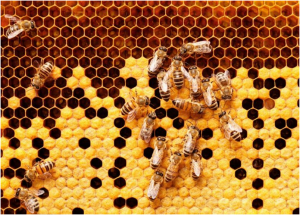2M beehives imported to California for almond bloom

Honybee hive(BigBlueStudio)
By ED BOLING / The Packer
California grows 1.5 million acres of almonds, and every spring, all of that acreage must be pollinated.
With almond blossoms being a rich source of food for honeybees, it’s a natural symbiotic relationship. The problem in California is that there aren’t enough bees to pollinate such a large number of almond trees.
To help mitigate this problem, the state imported roughly 2.1 million beehives for the 2021 almond pollination. Assuming each hive contains roughly 20,000 worker bees, this comes out to 42 billion bees. Hive imports will likely increase in 2022, as more almond acreage enters bearing age, according to Jacob Wenger, assistant professor of entomology at California State University, Fresno.
There are several reasons for the gap in honeybees to pollinate almond orchards. One reason has to do with the growth of the almond industry. California’s climate also plays a role, as does crop diversity.
“With the boom in almond planting, demand has skyrocketed and more hives have had to be imported,” Wenger said. “On the flip side, it is challenging to increase hive supply in California due to the state’s Mediterranean climate, which limits the availability of floral resources in the summer and fall. Another issue is increased agricultural intensification, which has led to less crop diversity, again reducing the availability of flowers for honeybees to feed upon.”
That being the case, the number of imported hives the state needs is five times greater than its own hive population.
“It’s recommended to use two hives per acre during pollination. So, for the California almond crop, 3 million beehives are recommended,” said Josette Lewis, chief scientific officer at the California Almond Board. “Unfortunately, only about half a million beehives exist in California. The rest must be imported.”
Almond trees must be pollinated, and they produce a lot of nectar that feeds the honeybees.
“The honeybees are only in almond orchards for four to six weeks, although they spend several months in the state. They’re imported in November and December. Beekeepers house the bees so they can adjust to the California climate,” Lewis said. “Then, they are moved to almond orchards around early February when blossom season begins. Finally, once their work is done, many of the honeybees are shipped back across the U.S.”
The return home is still triggered by nature, after the almond bloom is over.
“Most hives will leave shortly after almond petal drop in mid to late March,” Wenger said. “This is because outside of the bloom season, almond orchards are a veritable food desert for honeybees with little to no flowering plants for them to forage on.”
Not all bees return to their home states, though. Some will move north to the state of Washington to assist in the pollination of apples, pears and cherries, according to Buzz Landon, president of the California State Beekeepers Association.
A small number of hives will stay in California for a few months to pollinate other smaller acreage crops, such as stone fruits, cane berries, apples, melons, squash and seed crops, Wenger said.
About 40% of commercial beehives travel to the upper Midwest because of the natural prairie grasses and conservation farms in those states, which provide the honeybees with a variety of forage. Just like humans, honeybees, Lewis said.
As it turns out, the journey also boosts the honeybee population.
“Many beekeepers double their hives during the almond pollination,” Lewis said. “Most hives are less active in winter. They’re not growing as hives. The hives come out stronger from almond blossom.”








